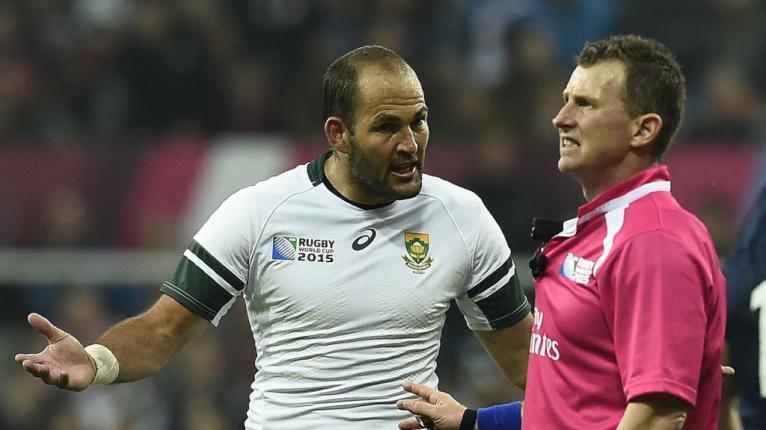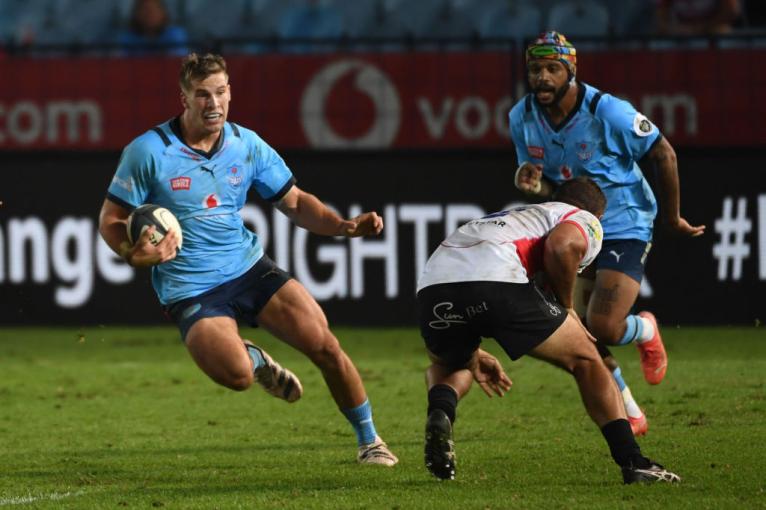
[ad_1]
All it took was one scrum, a Welsh team low on confidence, and the world’s best player to show us what is possible under a new law that offers more protection for scrum-halves. After 21 minutes in the opening round of this year’s Six Nations, Antoine Dupont, who had already set up a try for Theo Attissogbe with an inch-perfect cross-field kick, fed the ball into a French scrum in Welsh territory.
Previously, Wales’ scrum-half, Tomos Williams, would have been all over Dupont like a rash, but the new laws compelled him to stand a good two metres further back until the ball emerged out the end of the scrum. France’s No. 8, Gregory Alldritt, picked it up, by which time Dupont had swung round and stood around five metres behind and to the right of the scrum where he collected the pass.
Then he exploded forward. Thomas Ramos joined the line from full-back and received the ball from Dupont who had switched on a wraparound run to get it back. By the time a Welsh defender had laid a hand on the French captain, he had cantered to the edge of Wales’ 22 and off-loaded for Attissogbe down the right tram. One minute and eight phases later, Louis Bielle-Biarrey was sliding over for a try.
Antoine Dupont was too hot for Wales to handle in this year’s Six Nations opener (Photo by Jean Catuffe/Getty Images)
This is an admittedly small sample size but it is a strike move that has no doubt caught the attention of attack coaches around the world. No. 8s picking up off the back of the scrum to open options on both sides of the set piece is nothing new. It’s how France manipulated that space with Dupont dropping deeper in the pocket that is worth our attention.
“Dupont definitely has that extra time and space now,” says Richie Rees, the former Welsh scrum-half with nine caps who until recently worked as attack coach for Cardiff Rugby. “Not that he needed it. But the potential is devastating when you consider what he could do with an extra three or four steps before the contact arrives. How teams launch those attacks off the base of first phase could potentially change in a big way.”
A quick caveat. Using Dupont to form a theory on the attacking threats of scrum-halves is like using Jimi Hendrix to make an argument on the possibility of fret work on a guitar. We’re talking about a “freak”, as the Stormers’ backline coach Dawie Snyman calls him. But that doesn’t mean we can’t pontificate on the potential of mortals who wear the 9 jersey for other teams.
I think [the law change] does the actual art of being a 9 a real disservice. I think it’s a terrible law change.
“It’s not surprising it’s France who have come up with the best way to utilise that extra space,” Snyman points out. “The way they think about the game, it all starts with the 9. When we played Toulon and Racing 92 [in the Champions Cup] this season, we spent more time analysing Baptiste Serin and Nolan le Garrec than anyone else. If we could have kept them quiet we’d have had a better chance of winning.”
The Stormers couldn’t, and lost both their games against French opposition.
Snyman continues: “What they do really well is encourage their 9s to attack the line, to have a ball carrying threat. They’re not afraid to look for soft shoulders, to square up defenders and take the contact. Their distribution and speed to the ball still has to be good, but it’s the extra threat they have that I find interesting. If they have that little bit of extra time they could be even more dangerous.”
Does this mean we’ll start to see an evolution in the type of scrum-half selected by top teams? Nick Mullins, the lead commentator for TNT, opened that can of worms on air. “You wonder where the little annoying scrum-halves are going to go,” he mused during a Premiership clash between Leicester Tigers and Exeter Chiefs back in September. “You wonder where that’s going if that’s taken out of the armoury.”
 Where would Springbok great Fourie du Preez fit in today’s backline under the law changes? (LIONEL BONAVENTURE/AFP via Getty Images)
Where would Springbok great Fourie du Preez fit in today’s backline under the law changes? (LIONEL BONAVENTURE/AFP via Getty Images)
Austin Healey, who played across the backline throughout a 16-year career, was less diplomatic: “I think [the law change] does the actual art of being a 9 a real disservice, if it’s easy now to just put the ball in and get the ball away from the base [of the scrum] – I know it starts the game again – but now it might breed a different type of 9, just an athlete, someone who hasn’t got those inherent skills… I think it’s a terrible law change.”
Is Healey right? Will scrum-halves start to resemble loose forwards or centres? If so, what would that do to the players on either side of them? Does that put more distributing responsibilities on the No. 8, which could see a move away from the battering ram at the base of the pack – players such as Jasper Wiese, for example – and towards more rangy operators in Ben Earl, Taulupe Faletau and Alldritt? Will fly-halves now start to resemble centre-hybrids such as Henry Slade or Owen Farrell? Will scrum-halves effectively perform as first receivers? At the risk of going down a tangent, where would a player like South Africa’s Fourie du Preez play today? If this one law change is to have such dramatic effects down the road, would a player with the all-court skills of Du Preez gravitate towards the 10 jersey?
One man who remains nonplussed by the debate is Rory Kockott, the South Africa-born scrum-half who won 11 caps for France and represented Castres 284 times before a switch to Stade Français last season.
I don’t think a player like Duane Vermeulen, as brilliant as he was, would necessarily be the best option if the 9 is going to drop into that space.
“I don’t think the 9 and 10 can be changed in the way centres or back-rowers can change,” Kockott explains. “It does not involve the same process or the same mentality. The real difference comes with the instinct, which is so ingrained in a player from a young age. So I hope that the 9s and 10s will stay [individualised].”
This will be a welcome insight for scrum-halves who fit the traditional mould. As Rees says, “The primary task of the 9 is to generate ball speed. I don’t necessarily think we’ll see too many changes to 9s in that regard. Because you can have a ball carrying threat, but is he going to get that ball down the line? Is he going to get to the ball quickly to keep the move going? Those are the questions coaches will want to answer. It’s about what other teams do in defence, and how teams use their 8s off the scrum that might change.”
Snyman picks up the story: “The No. 8 becomes a much more potent weapon, but you need guys who are quick off the mark. Guys like Bobby Skinstad or Pierre Spies. Look at how the Bulls use Cameron Hanekom. He is so dangerous as he’s phenomenal off the back of the scrum. I don’t think a player like Duane Vermeulen, as brilliant as he was, would necessarily be the best option if the 9 is going to drop into that space.”
 Explosive back-row forwards such as Cameron Hanekom could also grow in influence (Photo by Lee Warren/Gallo Images)
Explosive back-row forwards such as Cameron Hanekom could also grow in influence (Photo by Lee Warren/Gallo Images)
Law changes can often draw derision from fans who already find the game convoluted, but for coaches, these tweaks separate the wheat from the chaff.
“It’s exciting,” Rees concludes. “Defending the scrum might be a guessing game now as the 9 can go both ways if he hangs behind his 8. We might see defending 9s shoot out more, like South Africa have used Faf de Klerk in the past. Maybe that would require them to be more physical, but even the most robust 9 isn’t going to stop an 8 if he’s running down that inside channel.
“It makes it interesting. Trying to figure out how best to exploit the space, while at the same time restricting the opposition, that’s why you get into coaching. Ultimately, though, you can only run the race with the horses you have. If you’ve got a guy like Dupont, it makes things a little easier.”
The French skipper’s physicality as he carries to the line, his off-loading threat, his ability to kick under contact, his quick feet and his knack of connecting with support runners means he is a nightmare to guard against. Just because Dupont can do it, doesn’t mean others have the tools to follow. As Jimi Hendrix once quipped, “Blues is easy to play, but hard to feel.” He’s shown the way. Can others follow?
[ad_2]
Copyright for syndicated content belongs to the linked Source link

